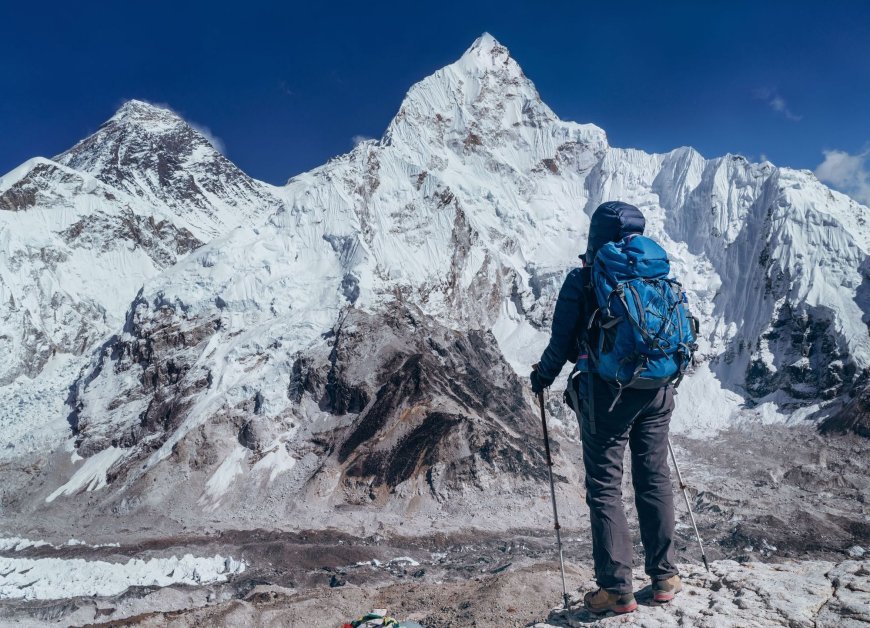Everest Base Camp Trek: Conquer the Trail to the Roof of the World

A Legendary Trek Through the Himalayas
The Everest Base Camp Trek is one of the most iconic and sought-after adventures in the world. Each year, thousands of trekkers embark on this unforgettable journey to stand face-to-face with Mount Everest, the highest mountain on Earth. This trek is not just about reaching a destination—it’s about discovering the breathtaking beauty of Nepal’s Khumbu region, immersing in Sherpa culture, and pushing personal limits in the mighty Himalayas.
Where the Journey Begins: The Gateway to Everest
The trek officially starts in Lukla (2,860 meters), after a dramatic 40-minute flight from Kathmandu. Known for its short runway and incredible scenery, Lukla Airport is an adventure in itself. From here, trekkers make their way through charming mountain villages, yak pastures, suspension bridges, and dense pine forests on the way to the Everest Base Camp (5,364 meters).
Detailed Itinerary for the Everest Base Camp Trek
This classic 12- to 14-day trekking itinerary includes proper acclimatization days, ensuring safety while maximizing the experience.
-
Day 1: Fly from Kathmandu to Lukla, trek to Phakding (2,610m)
-
Day 2: Trek to Namche Bazaar (3,440m) – the heartbeat of Sherpa culture
-
Day 3: Acclimatization day in Namche, optional hike to Khunde or Everest View Hotel
-
Day 4: Trek to Tengboche (3,860m), visit the majestic Tengboche Monastery
-
Day 5: Trek to Dingboche (4,410m), admire views of Ama Dablam
-
Day 6: Acclimatization hike to Nangkartshang Peak (5,100m)
-
Day 7: Trek to Lobuche (4,910m)
-
Day 8: Trek to Gorak Shep, visit Everest Base Camp
-
Day 9: Early morning hike to Kala Patthar (5,545m) for sunrise views, descend to Pheriche
-
Days 10-12: Return to Lukla via Namche Bazaar
Best Seasons to Trek to Everest Base Camp
Choosing the right season enhances your trek experience.
-
Spring (March–May): Best for wildflowers, rhododendrons, and clear skies.
-
Autumn (September–November): Dry weather and outstanding mountain visibility.
-
Winter (December–February): Quiet trails but frigid temperatures.
-
Monsoon (June–August): Heavy rains, leeches, and flight delays—less recommended.
Altitude Acclimatization and Safety Tips
Climbing to over 5,000 meters, the risk of Acute Mountain Sickness (AMS) is significant. Prioritize:
-
Two rest days: Namche and Dingboche
-
Hydration: At least 3–4 liters of water daily
-
Gradual ascent and “climb high, sleep low” principle
-
Knowing symptoms: headache, nausea, dizziness, fatigue
Always consider carrying Diamox and consult your guide or porter if symptoms appear.
Highlights of the Everest Base Camp Trek
1. Namche Bazaar – Sherpa Capital
A vibrant mountain town where tradition meets trekking culture. Stock up on supplies, visit cafes, explore the Sherpa Museum, and acclimatize with day hikes.
2. Tengboche Monastery
One of the most spiritual spots on the trail. Monks chant daily prayers in the presence of Everest and Ama Dablam, offering trekkers a deeply serene atmosphere.
3. Kala Patthar – Ultimate Everest Viewpoint
While you can’t see Everest directly from base camp, Kala Patthar (5,545m) offers the best front-row view of Mount Everest, especially at sunrise.
4. Everest Base Camp
The final destination, where climbers prepare for Everest summit attempts. Covered in fluttering prayer flags and icefall views, it’s a powerful moment of accomplishment.
Local Culture and Hospitality
The Khumbu region is home to the Sherpa people, known for their resilience, spirituality, and warm hospitality. Trekkers stay in teahouses, simple mountain lodges that provide cozy beds and warm meals. Cultural respect, such as walking clockwise around mani stones and respecting local customs, enriches the experience.
Permits and Entry Requirements
To trek to Everest Base Camp, the following permits are mandatory:
-
Sagarmatha National Park Entry Permit: NPR 3,000 (~USD 25)
-
Khumbu Pasang Lhamu Rural Municipality Permit: NPR 2,000 (~USD 17)
Available in Kathmandu or Monjo checkpoint en route.
Cost of the Everest Base Camp Trek
Here’s a general cost overview for a mid-range guided trek:
| Item | Estimated Cost (USD) |
|---|---|
| Flights (Kathmandu–Lukla round) | $350–$400 |
| Trekking permits | $50–$60 |
| Guide and porter services | $400–$600 |
| Accommodation and food | $30–$50 per day |
| Trekking gear (if rented) | $100–$200 |
| Total Estimated Cost | $1,200–$1,800 |
Solo trekking can be cheaper but requires experience, while luxury treks (with helicopters or upgraded lodges) can exceed $3,000.
What to Pack for Everest Base Camp Trek
Prepare for all weather conditions and limited supplies on the trail:
-
Essential Gear: Trekking boots, warm base layers, fleece jacket, down jacket, waterproof outerwear
-
Accessories: Gloves, woolen hat, sunglasses, headlamp
-
Other Items: First aid kit, water purification tablets, snacks, sunscreen, wet wipes, cash
Porters usually carry up to 15–20 kg, so pack smartly.
Why Choose a Guided Trek Over Solo Travel
While solo trekking is allowed, a guided trek offers many advantages:
-
Local insight and cultural immersion
-
Emergency support and medical assistance
-
Organized logistics (permits, flights, accommodations)
-
Peace of mind in high-altitude terrain
Plus, your participation helps support local economies and guides.
Conclusion: Everest Base Camp Trek Is the Adventure of a Lifetime
The Everest Base Camp Trek is a perfect combination of natural wonder, human spirit, and Himalayan grandeur. It’s not just a trek; it’s a challenge that rewards you with personal growth, unmatched views, and unforgettable memories. Whether you're standing at the base of Everest or watching dawn break from Kala Patthar, this journey will leave you transformed.
What's Your Reaction?




























































